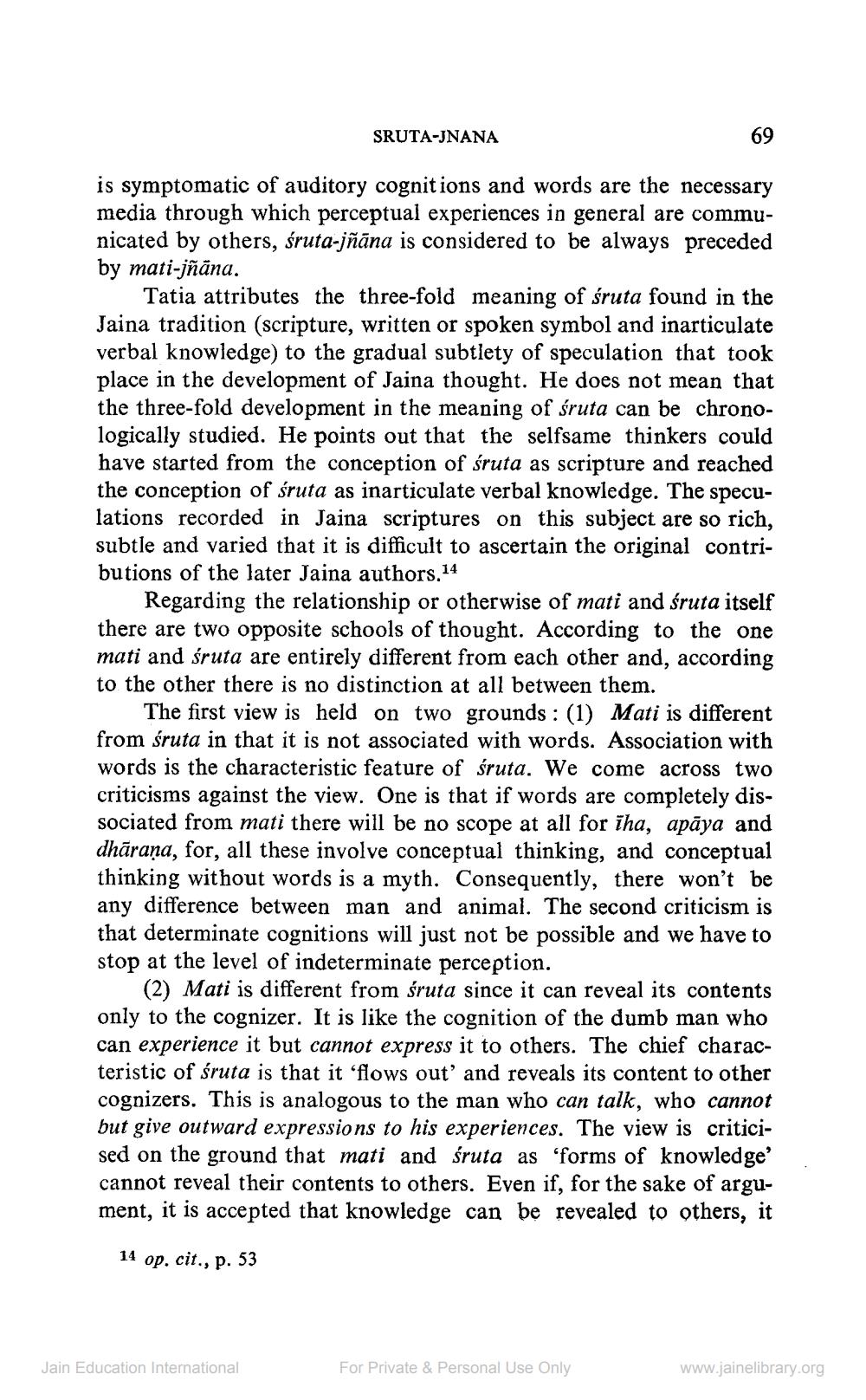________________
SRUTA-JNANA
is symptomatic of auditory cognitions and words are the necessary media through which perceptual experiences in general are communicated by others, śruta-jñāna is considered to be always preceded by mati-jñāna.
69
Tatia attributes the three-fold meaning of śruta found in the Jaina tradition (scripture, written or spoken symbol and inarticulate verbal knowledge) to the gradual subtlety of speculation that took place in the development of Jaina thought. He does not mean that the three-fold development in the meaning of śruta can be chronologically studied. He points out that the selfsame thinkers could have started from the conception of śruta as scripture and reached the conception of śruta as inarticulate verbal knowledge. The speculations recorded in Jaina scriptures on this subject are so rich, subtle and varied that it is difficult to ascertain the original contributions of the later Jaina authors.14
Regarding the relationship or otherwise of mati and śruta itself there are two opposite schools of thought. According to the one mati and śruta are entirely different from each other and, according to the other there is no distinction at all between them.
Jain Education International
The first view is held on two grounds: (1) Mati is different from śruta in that it is not associated with words. Association with words is the characteristic feature of śruta. We come across two criticisms against the view. One is that if words are completely dissociated from mati there will be no scope at all for iha, apāya and dhāraṇa, for, all these involve conceptual thinking, and conceptual thinking without words is a myth. Consequently, there won't be any difference between man and animal. The second criticism is that determinate cognitions will just not be possible and we have to stop at the level of indeterminate perception.
(2) Mati is different from śruta since it can reveal its contents only to the cognizer. It is like the cognition of the dumb man who can experience it but cannot express it to others. The chief characteristic of śruta is that it 'flows out' and reveals its content to other cognizers. This is analogous to the man who can talk, who cannot but give outward expressions to his experiences. The view is criticised on the ground that mati and śruta as 'forms of knowledge' cannot reveal their contents to others. Even if, for the sake of argument, it is accepted that knowledge can be revealed to others, it
14 op. cit., p. 53
For Private & Personal Use Only
www.jainelibrary.org




